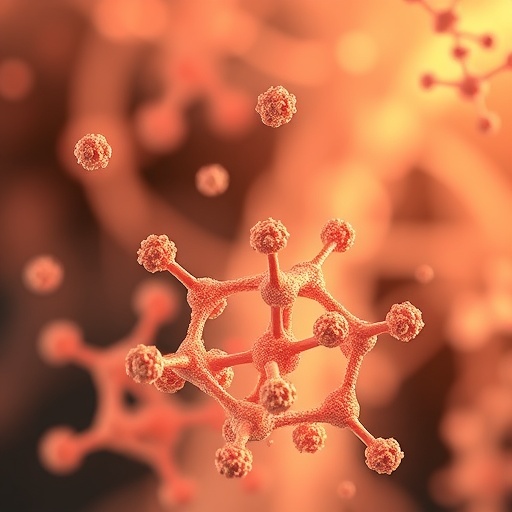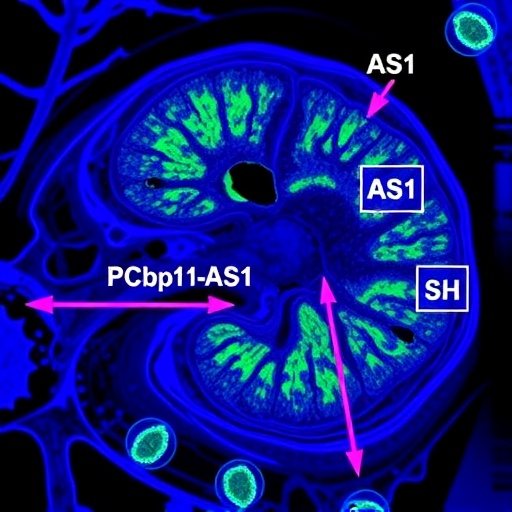The realm of cancer treatment is witnessing a pivotal transformation, particularly in one of the most challenging subsets of patients—elderly individuals afflicted with recurrent or metastatic nasopharyngeal carcinoma (RM-NPC). Recent clinical insights shed light on how immunotherapy, especially immune checkpoint inhibitors (ICIs), is reshaping therapeutic strategies for this vulnerable, yet historically underrepresented group. A breakthrough study published in BMC Cancer in 2025 meticulously dissects the effectiveness and safety of immunotherapy in RM-NPC patients aged 65 and above, marking a significant stride in oncological care for the elderly.
Nasopharyngeal carcinoma, predominately endemic in southern China and Southeast Asia, poses unique treatment challenges when it recurs or metastasizes. The standard frontline approach for RM-NPC involves a combination of ICIs and chemotherapy, harnessing the body’s immune system to attack cancer cells more effectively. However, a critical gap has persisted in understanding how these therapies perform in older adults, who often carry additional comorbidities and may tolerate aggressive treatments differently compared to younger cohorts. This study explicitly addresses this gap by focusing exclusively on patients aged 65 and older.
Involving a retrospective analysis of 95 elderly RM-NPC patients treated between January 2015 and February 2022, the research utilized advanced statistical models, including Cox regression, to analyze survival outcomes critically. The participants, predominantly male, were evaluated not only for their cancer progression but also through comprehensive geriatric assessments using established comorbidity indices such as ACE-27, the Charlson Comorbidity Index (CCI), and its age-adjusted variant (ACCI). These rigorous assessments afforded a nuanced understanding of how simultaneous health burdens might influence immunotherapy outcomes.
One of the cornerstone findings reveals that the incorporation of local therapy—treatments targeted to specific tumor sites alongside systemic immunotherapy—corresponded to markedly improved progression-free survival (PFS). The hazard ratio of 0.352 indicates that these combined modalities reduce the risk of disease progression by nearly two-thirds, underscoring the critical value of multimodal treatment regimens in elderly patients. This finding is groundbreaking, suggesting that local therapies remain essential even in advanced, metastatic scenarios for older adults, significantly extending the timeline without tumor advancement.
Interestingly, survival outcomes and toxicity profiles did not vary significantly between different age brackets within the elderly group or among various types of ICIs administered. This challenges previously held assumptions that older patients might experience disproportionate adverse effects or diminished therapeutic responses due to immunosenescence—the gradual decline of immune system function with age. Instead, the data conveys a reassuring message: immunotherapy is both effective and well tolerated in elderly RM-NPC patients.
The median follow-up period approaching two and a half years provided robust longitudinal data, reinforcing the durability and safety of immunotherapy in this demographic. Continuous monitoring revealed no unexpected toxicity signals that might preclude the broader application of these treatments. Such long-term observations are vital in oncology, where delayed adverse events can sometimes emerge and complicate patient management.
The integration of sophisticated comorbidity scoring systems exemplifies the study’s methodological rigor. By quantifying the patients’ overall health statuses, including non-cancer-related medical conditions, investigators could parse out nuanced influences on survival, distinguishable from tumor biology alone. This approach enhances clinical decision-making by identifying those most likely to benefit from intensive therapies despite their age.
Crucially, the research highlights the tailored nature of cancer immunotherapy in the elderly, where personalized treatment plans can be devised taking into account both cancer dynamics and patient resilience. The absence of significant differences between various ICI agents suggests flexibility in choosing immunotherapy drugs based on availability and individual patient tolerance, broadening therapeutic options.
The study also beckons future research endeavors to explore combinatory therapeutic regimens further, particularly those leveraging local treatments alongside systemic ICIs. As immunotherapy continues to evolve, integrating radiation, ablative therapies, or localized chemotherapy with ICIs might optimize outcomes even more, especially for patients with complex disease presentations.
Moreover, these findings carry significant implications for health policy and eldercare oncology guidelines, encouraging the incorporation of immunotherapy protocols tailored for the aging population. Given the increasing median age worldwide and the growing cancer burden among seniors, addressing their distinct needs ensures equitable access to cutting-edge treatments and improves overall cancer survival rates.
Beyond oncology, the principles gleaned from this study might catalyze broader investigations into immune system function across aging populations, influencing how other immunologically driven diseases are treated in older adults. The apparent preservation of immunotherapeutic efficacy challenges misconceptions about the diminished capacities of the aged immune system.
In conclusion, the research published in BMC Cancer is a clarion call for the oncology community to expand the horizons of immunotherapy application. It reaffirms that age should not be an exclusion criterion for advanced cancer treatments, emphasizes the synergistic potential of multimodal interventions, and bolsters confidence in the safety profile of ICIs among elderly RM-NPC patients. This landmark study not only enhances scientific understanding but also kindles hope for improved survival and quality of life in a patient population that has long awaited therapeutic breakthroughs.
As the cancer treatment landscape advances, personalized immunotherapy regimens grounded in robust geriatric evaluations will likely become the gold standard. The evidence presented serves as a foundation upon which future clinical trials and real-world therapeutic strategies can be built, ultimately transforming the prognosis for elderly individuals battling recurrent or metastatic nasopharyngeal carcinoma.
Subject of Research: Efficacy and safety of immunotherapy in elderly patients (≥65 years) with recurrent or metastatic nasopharyngeal carcinoma
Article Title: Effect and safety of immunotherapy among elder patients (age ≥ 65) with recurrent or metastatic nasopharyngeal carcinoma
Article References:
Xie, RL., Cai, WL., Ouyang, YF. et al. Effect and safety of immunotherapy among elder patients (age ≥ 65) with recurrent or metastatic nasopharyngeal carcinoma. BMC Cancer 25, 691 (2025). https://doi.org/10.1186/s12885-025-14108-w
Image Credits: Scienmag.com
DOI: https://doi.org/10.1186/s12885-025-14108-w
Tags: advanced statistical models in cancer researchchemotherapy and immunotherapy combinationcomorbidities in elderly cancer treatmentimmune checkpoint inhibitors effectivenessimmunotherapy for elderly cancer patientsnasopharyngeal carcinoma clinical insightsoncology care for elderly patientsrecurrent nasopharyngeal carcinoma treatmentretrospective analysis of cancer treatmentsrisks of immunotherapy in older adultssouthern China nasopharyngeal carcinomatherapeutic strategies for metastatic NPC





